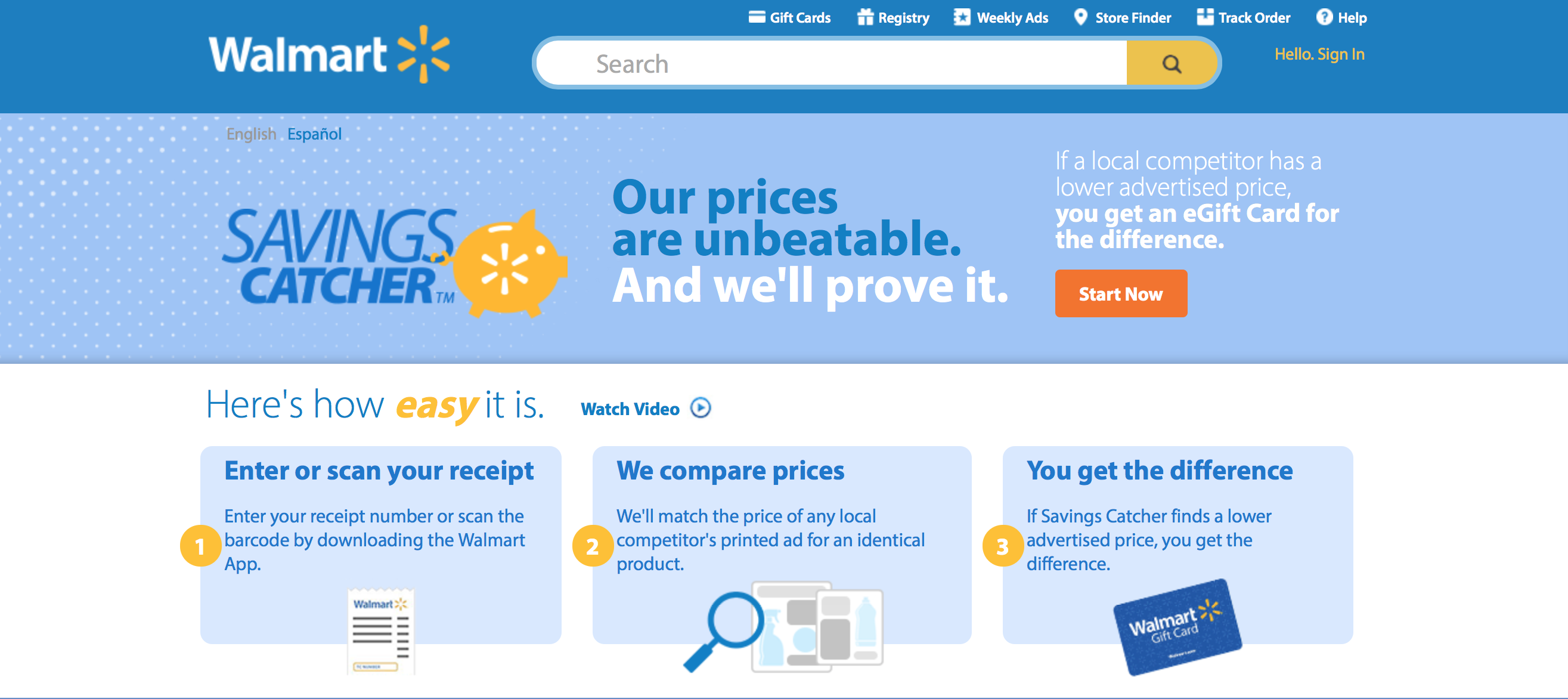WASHINGTON — If you’re an avid Wal-Mart couponer, it may be time to hang up your scissors.
Wal-Mart Stores Inc. is launching a new price-matching program called “Savings Catcher” Monday, aimed at cutting the time consumers spend looking through coupon booklets and driving to other stores to price match. But experts say it might not catch on because the system requires a lot of steps and shoppers may not want to give up more personal data.
The website and application-based system compares items on your receipt with prices of items advertised in stores around the area. If a store advertises a lower price for an item, Wal-Mart will give the consumer a Wal-Mart e-gift card for the difference.
Earlier this summer Wal-Mart refused to match the price of “all counts and sizes” of Pampers diapers sold at Dollar General Corp. Even though Dollar’s offer was vaguely worded because it sells smaller packages compared to retail giants like Wal-Mart and Target, the diaper debacle brought attention to the price-matching war.
The new Wal-Mart system comes shortly after Dollar Tree, Inc. announced it plans to buy rival Family Dollar Stores Inc. for $8.5 billion.
“With the growth of Wal-Mart, dollar stores and clubs, effective pricing is already at cutthroat levels,” said Tim Nelson, president of advertising agency TRIS3CT. “The real impact is that there is just greater real-time transparency for offers that disrupt the current pricing structure for a given category.”
Right now the Savings Catcher tool only applies to about 80,000 grocery and consumable products, but Wal-Mart said it plans to expand to produce and general merchandise in the coming months.
However, not everyone is convinced consumers will jump on board.
“In terms of practical application for consumers, it’s not that great,” said Max Goldberg, president of consulting firm Max Goldberg & Associates. “It’s too many steps. I just don’t see a lot of people taking the time to go through all of these steps to save a dollar or two.”
But consumers are looking for a consistent, across-the-board pricing policy, said
Lauren Bordeaux, creator of the Savvy Saving Maven Blog.
One of the more difficult parts of the price-matching game is being a couponer who is more knowledgeable on the store’s coupon policy than the cashier, she said.
“Then coupon scenarios can become a fight, which is never fun,” Bordeaux said. “What retailers should stress is a coupon policy knowledge among their staff and making over-arching decisions quickly because situations like the diapers scenario become a problem.”
Some retail strategy experts said Wal-Mart isn’t only aiming to improve consumer saving efficiency. In fact, the system is also gaining valuable customer data, driving digital engagement with its customers and keeping those customers in its shopping and saving ecosystem, according to Carol Spieckerman, CEO of retail strategy firm newmarketbuilders.
“Requiring shoppers to take action, either by going to Wal-Mart’s website, scanning a code or providing a phone number, allows Wal-Mart to address pricing on an exception basis rather than lowering prices across the board in an attempt to beat competitors at every turn,” Spieckerman said.

